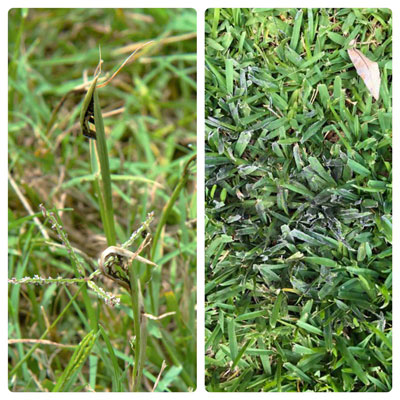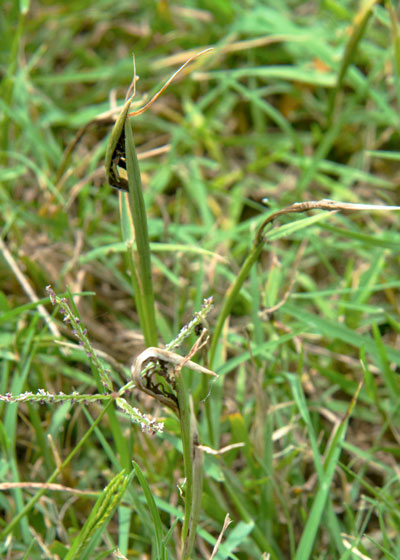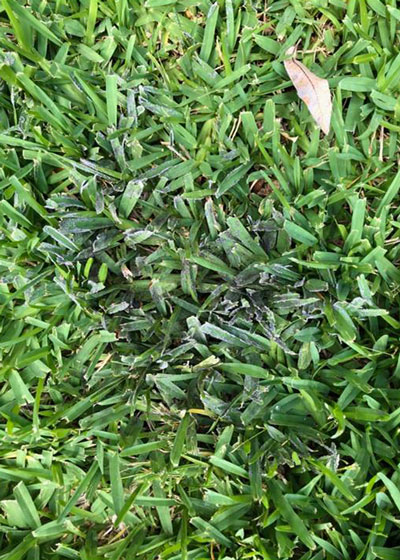Questions of the Week Number 1: June 14, 2018

“What is wrong with our turfgrass? What are these black and gray growths on the lawn?”
These two funguses may have the worst-sounding names in the history of turf-dom.
Bermudagrass smut (on the left) shows up in late May and June as the grass begins to form its seed heads. Smut attacks only the seed heads, not the grass blades or runners. The black fruiting structures rub off easily. People first notice them as black smudges on their white sneakers.

Reproductive spores of bermudagrass smut show up in the seedheads but do not impact blades or runners.
The good news is that smut isn’t especially harmful to the grass, and once it runs its course of blooming and setting seed, smut is pretty much gone for another year. You can apply a high-nitrogen fertilizer to encourage vigorous vegetative (leaf) growth at the expense of the flowers, and you can also mow more frequently while this is appearing. Otherwise, just endure it. It, too, will pass.
Slime mold (on right in panel above) is a disgusting-sounding organism that is actually quite harmless. What you’re seeing are the reproductive spores. The mold itself is living off decaying organic matter down on the soil. The spores merely form on grass blades of any type of turf, even weeds.

Slime mold looks like cigarette ashes were dumped onto the lawn. You’ll see it on both bermuda and St. Augustine, but it’s far more noticeable on the wider blades of St. Augustine.
Slime mold shows up during the summer. The good news is the only way it’s going to harm your lawn is by the few days of shading it casts on the blades of your grass. You’ll generally pick up the spores as you mow. I guess if it really annoyed you, you could always blast it off with a hard stream of water. It’s absolutely a non-issue in lawnkeeping.
